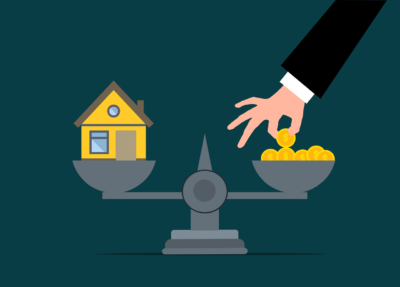Taking out a loan, whether it be for a home, a car, an education, or to pay off previous obligations, can help us when we most need financial support. But after we’ve taken out a loan, the idea of paying it back can sometimes feel overwhelming. To properly manage debt and speed up the loan payback process, you must have a well-defined strategy in place.
This article will look at several loan repayment methods that might give borrowers back control over their money and enable them to pay off their debts more quickly.
Understanding Loan Repayment Terms and Options
The repayment of loans can vary depending on what type it is and the service provider. There are several key terms and options to understand when it comes to loan repayment. Let’s explore them.
- Loan Period/Loan Term: This refers to the length of time over which the loan is repaid which is typically expressed in years. The loan period can vary based on the type of loan and the borrower’s preferences. The most common loan terms for personal loans, home loans, and car loans can range from 1 year to 30 years.
- Interest Rate: The interest rate is the cost of borrowing money from the lender, expressed as a percentage of the loan amount. It is typically an annual percentage rate (APR). The interest rate is a significant factor in determining the overall cost of the loan. In Australia, interest rates can be fixed (remain constant throughout the loan term) or variable (fluctuate based on market conditions).
- Monthly Payments/Installments: This refers to the regular payments made by the borrower to repay the loan. The monthly payment amount is determined by the loan amount, interest rate, and loan term. It includes both the principal amount, which is the original loan amount, and the interest charged on the outstanding balance. These payments are usually made monthly but can differ based on the loan agreement.
- Repayment Frequency: This term indicates how often the borrower makes loan repayments. The most common repayment frequency is monthly. However, some lenders may offer options for fortnightly or weekly repayments. Making more frequent payments can help reduce the overall interest paid over the loan term.
- Principal: The principal refers to the original amount borrowed from the lender. It does not include any interest or fees charged by the lender.
- Repayment Options: Different loan types may offer various repayment options, such as:
- Principal and Interest: This is the most common repayment option. In each payment, a portion goes towards repaying the principal amount borrowed, and the remainder covers the interest charged.
- Interest-Only: Some loans offer an interest-only period, usually for a specific duration at the beginning of the loan term. During this period, the borrower only pays the interest charges and does not reduce the principal balance. After the interest-only period ends, the borrower starts making principal and interest repayments.
- Lump Sum Payments: Some loans may allow borrowers to make additional lump sum payments, which can help reduce the principal amount and save on interest over time.
- Redraw Facility: Certain loans offer a redraw facility, allowing borrowers to access any additional repayments they have made. This can be useful if the borrower needs extra funds in the future.
It’s essential to carefully review the loan agreement and consult with the lender or a financial advisor to understand the specific terms and options for each loan.
Overview of Loan Types
Here’s an overview of the four loan types you mentioned—student loans, personal loans, mortgage loans, and car loans.
1. Student Loans
Student loans in Australia are primarily offered through the Higher Education Loan Program (HELP). The two main types of student loans available are:
- HECS-HELP: This loan helps eligible Commonwealth-supported students pay for their tuition fees. Repayments are made through the tax system once the borrower’s income reaches a certain threshold.
- FEE-HELP: This loan assists eligible fee-paying students with their tuition fees for higher education courses. Repayment conditions are similar to HECS-HELP.
It’s important to note that the Australian Government regularly reviews and updates student loan policies, so it’s advisable to refer to official government sources for the most up-to-date information.
2. Personal Loans
Personal loans are loans that can be used for various purposes, such as debt consolidation, home renovations, or purchasing consumer goods. Although often unsecured, these loans can also be secured by collateral. Key features of personal loans include:
- Fixed or variable interest rates: Personal loans can have fixed interest rates that remain constant throughout the loan term or variable rates that fluctuate based on market conditions.
- Loan amounts and terms: Loan amounts can vary, ranging from a few thousand dollars to tens of thousands, depending on the borrower’s eligibility. Loan terms typically range from one to seven years.
- Repayment options: Personal loans generally require regular monthly repayments of principal and interest over the loan term.
3. Mortgage Loans
Mortgage loans, also known as home loans, are used to purchase or refinance property. Key features of mortgage loans include:
- Secured loans: Mortgage loans are secured against the property being purchased, which means the property acts as collateral for the loan.
- Loan-to-Value Ratio (LVR): Lenders assess the borrower’s LVR, which is the percentage of the property value that they are borrowing. The borrower typically needs to contribute a deposit (usually at least 5% of the property value) and may need to pay for the lender’s mortgage insurance (LMI) if their deposit is below 20%.
- Interest rates and repayment options: Mortgage loans offer both fixed and variable interest rate options. Repayments can be structured as principal and interest or interest-only, depending on the borrower’s preference and the loan product.
4. Car Loans
Car loans are specifically designed to finance the purchase of a vehicle. Key features of car loans in Australia include:
- Secured loans: Car loans are often secured against the vehicle being financed, making the vehicle the collateral for the loan.
- Loan amounts and terms: Loan amounts for car loans can vary depending on the vehicle’s value and the borrower’s eligibility. Loan terms typically range from one to seven years.
- Interest rates and repayment options: Car loans can have fixed or variable interest rates. Repayments are usually made monthly, including both principal and interest.
When considering any type of loan, it is crucial to compare different lenders, review the loan terms and conditions, and seek professional advice if needed to make an informed decision that suits your financial situation.
Evaluating Lenders and How to Access Loan Information
Evaluating lenders and accessing loan information is an essential part of the loan application process. Here are some steps to help you evaluate lenders and access loan information.
- Research Lenders: Start by researching different lenders. Consider traditional banks, credit unions, online lenders, and other financial institutions. Look for lenders that offer the type of loan you need, such as student loans, personal loans, mortgage loans, or car loans.
- Compare Interest Rates: Interest rates significantly impact the cost of borrowing. Compare the interest rates offered by different lenders for the specific loan type you are interested in. Keep in mind that interest rates can vary based on factors like the loan term, loan amount, and creditworthiness.
- AssChargesrges: In addition to interest rates, lenders may charge fees, such as application fees, ongoing fees, late payment fees, or early repayment fees. Consider these fees when evaluating lenders to understand the overall cost of the loan.
- Check Loan Features and Terms: Review the loan features and terms provided by each lender. Look for aspects such as repayment options, flexibility, repayment frequency, redraw facilities, or any additional benefits or features that may be relevant to your needs.
- Read Loan Documentation: Carefully read the loan documentation, including the loan agreement, terms and conditions, and any other associated documents. Pay attention to the fine print, repayment terms, interest rate details, and any other important information.
- Seek Loan Information from Official Sources: To access accurate and up-to-date loan information, it’s advisable to visit the official websites of lenders or contact them directly. Lenders typically provide information about their loan products, eligibility criteria, application process, and contact details on their websites.
- Utilise Comparison Websites: Several comparison websites allow you to compare loans from different lenders. These websites provide loan information, interest rates, fees, and other relevant details, making it easier to compare and choose the right loan for your needs.
- Seek Professional Advice: If you have specific financial circumstances or need assistance in understanding loan options, consider consulting with a financial advisor or mortgage broker. They can provide personalised advice and help you navigate the loan evaluation process.
Remember to gather as much information as possible, compare multiple lenders, and consider your financial situation and needs before making a decision. It’s important to select a reputable lender that offers favourable loan terms, competitive interest rates, and transparent loan information.
Assessing Your Financial Situation
Assessing your financial situation is crucial before taking on any loan. Here are some steps to help you evaluate your financial situation:
- Create a Comprehensive Budget: Start by creating a detailed budget that outlines your income and expenses. Calculate your monthly income from all sources, including salary, investments, or other sources. Then list all your expenses, including fixed expenses (rent/mortgage, utilities, insurance) and variable expenses (groceries, transportation, entertainment). This will give you a clear picture of your cash flow and help you identify how much you can allocate towards loan repayment.
- Identify Existing Debts: Make a list of all your existing debts, such as credit card balances, personal loans, car loans, or mortgages. Include the outstanding balances, interest rates, and minimum monthly payments. This will help you understand your current debt obligations and how they may affect your ability to take on additional loans.
- Understand Debt Terms: Review the terms of your existing debts, including interest rates, repayment periods, and any additional fees or charges. This will help you assess the overall cost of your debts and determine if there are any opportunities to refinance or consolidate your debts to potentially lower interest rates or improve repayment terms.
- Determine Available Funds for Loan Repayment: After calculating your income, expenses, and existing debt obligations, you can determine how much money you have available for loan repayment. Consider your disposable income—the amount left after deducting essential expenses from your income. This will help you understand your repayment capacity and determine the amount you can comfortably allocate towards loan repayments without straining your budget.
- Evaluate Savings and Emergency Fund: Assess your savings and emergency fund. It’s generally advisable to have an emergency fund that covers at least three to six months’ worth of living expenses. Consider if you are willing to use a portion of your savings for loan repayment or if you prefer to maintain a certain level of financial security.
- Calculate Debt-to-Income Ratio: Calculate your debt-to-income ratio by dividing your total monthly debt payments by your monthly income. This ratio helps lenders assess your ability to manage additional debt. A lower debt-to-income ratio indicates better financial stability and may increase your chances of loan approval.
Prioritising Loans for Repayment
Prioritising loans for repayment is an important step in managing your debt effectively. Here are some considerations to help you prioritise loans:
- Distinguish between High-Interest and Low-Interest Loans: Identify the interest rates associated with each loan. High-interest loans typically have higher interest rates, making them more costly over time. It’s generally advisable to prioritise repayment of high-interest loans first, as they can accumulate more interest and cost you more in the long run.
- Understand the Consequences of Default: Defaulting on a loan can have serious consequences, such as damaging your credit score, incurring late payment fees, or facing legal actions from the lender. It’s crucial to make timely repayments to avoid default and its associated repercussions.
- Importance of Paying on Time: Timely repayment is essential to maintain a good credit history and score. Late or missed payments can negatively impact your creditworthiness, making it more challenging to obtain future loans or favourable interest rates. Paying on time demonstrates financial responsibility and can help you build a positive credit history.
- Choose between Debt Snowball and Debt Avalanche Methods: Two common strategies for repaying multiple loans are the debt snowball method and the debt avalanche method:
- Debt Avalanche Method: The debt avalanche method focuses on repaying loans with the highest interest rates first while making minimum payments on other loans. By tackling high-interest debts, you save more money on interest payments over time.
- Debt Snowball Method: With the debt snowball method, you prioritise repaying the smallest loan balance first while making minimum payments on other loans. Once the smallest loan is paid off, you move on to the next smallest loan. This method provides a psychological boost by experiencing quick wins and gaining momentum as you eliminate smaller debts.
Choose the method that aligns with your financial goals, personal preferences, and motivation. Consider factors like interest rates, loan balances, and your emotional response to different repayment strategies.
Loan Repayment Strategies
Loan repayment strategies can help you accelerate your debt payoff and save on interest. Here are three effective strategies to consider:
- Increasing Monthly Payments: One straightforward strategy is to increase your monthly loan payments. By allocating more money towards your loan each month, you can pay off the principal balance faster and reduce the overall interest you’ll pay over the loan term. Consider adjusting your budget and cutting back on discretionary expenses to free up more funds for loan repayment.
- Making Extra Payments or Additional Contributions: Whenever possible, make extra payments towards your loans. This could involve making additional contributions beyond the required monthly payment. By doing so, you reduce the principal balance earlier, resulting in less interest charged over time. Check with your lender to ensure that extra payments are applied directly to the principal amount and not towards future payments.
- Utilising Windfalls or Bonuses: If you receive windfalls such as tax refunds, bonuses, or unexpected cash inflows, consider using them to make lump sum payments towards your loans. Applying these extra funds directly to your loan balance can help you reduce your debt. Prioritise paying down high-interest loans first for maximum impact.
When implementing these strategies, communicate with your lender to ensure that the additional payments are correctly applied and to confirm if there are any prepayment penalties or fees associated with early repayment. Also, keep track of your progress to stay motivated and celebrate milestones.
Loan Consolidation and Refinancing
Loan consolidation and refinancing are two options that borrowers can consider to manage their debt more effectively and potentially save money. Let’s explore each of these concepts:
- Loan Consolidation: Loan consolidation involves combining multiple loans into a single loan, often with a lower interest rate or more favourable terms. Here are some potential benefits of loan consolidation:
- Simplified Repayment: Consolidating multiple loans into one makes it easier to manage your debt by having only one monthly payment instead of several.
b. Potentially Lower Interest Rate: If you can secure a consolidation loan with a lower interest rate than your existing loans, you may save money on interest over the loan term.- Extended Repayment Term: Loan consolidation may allow you to extend the repayment term, resulting in lower monthly payments. However, keep in mind that a longer repayment term may result in paying more interest over time.
- Improved Cash Flow: Lower monthly payments resulting from consolidation can improve your cash flow, making it easier to manage your finances and meet other financial obligations.
- Loan Refinancing: Loan refinancing involves replacing an existing loan with a new loan that has different terms, such as a lower interest rate or changed repayment terms.
Here’s how it can potentially save you money:
- Lower Interest Rates: Refinancing your loan can help you secure a lower interest rate, which can result in reduced interest expenses over the loan term.
- Improved Loan Terms: Refinancing can allow you to negotiate improved loan terms, such as a shorter repayment term, which may help you pay off the loan faster and save on interest.
- Access to Additional Features: Refinancing may provide you with access to additional features or benefits, such as flexible repayment options, redraw facilities, or the ability to switch between fixed and variable interest rates.
- Debt Consolidation: Refinancing can also be used to consolidate multiple debts into one loan, similar to loan consolidation. This can simplify repayment and potentially lower interest costs.
- Impact on Interest Rates: Both loan consolidation and refinancing can potentially impact interest rates. The goal is to secure a lower interest rate, which can save you money over time. However, the actual interest rate you qualify for will depend on factors such as your credit score, income, loan type, and market conditions at the time of refinancing or consolidation.
It’s important to carefully consider the terms, fees, and overall cost of the new loan, including any potential prepayment penalties or fees associated with existing loans. Additionally, assess your financial situation, and future goals, and evaluate the potential savings and benefits against any potential costs or drawbacks before proceeding with loan consolidation or refinancing.
Consulting with a financial advisor or speaking to lenders offering consolidation or refinancing services can provide you with personalised advice and help you make an informed decision based on your specific circumstances.
Conclusion
Managing debt and achieving financial freedom requires proactive steps and a positive mindset. Understanding loan repayment strategies and concepts such as loan consolidation, refinancing, prioritising loans, and making extra payments can empower you to take control of your financial situation. By creating a comprehensive budget, identifying existing debts, and determining available funds for loan repayment, you lay the foundation for effective debt management. It’s essential to evaluate lenders, access loan information, and choose repayment options that align with your goals.
Remember, every extra dollar you put towards loan repayment brings you closer to financial freedom. By adopting a proactive approach and making consistent progress in managing debt, you can pave the way for a more secure financial future. Stay motivated, stay focused, and embrace the journey toward financial responsibility with a positive mindset.










